Skincare layering guide: We asked the experts for the correct way to apply our products
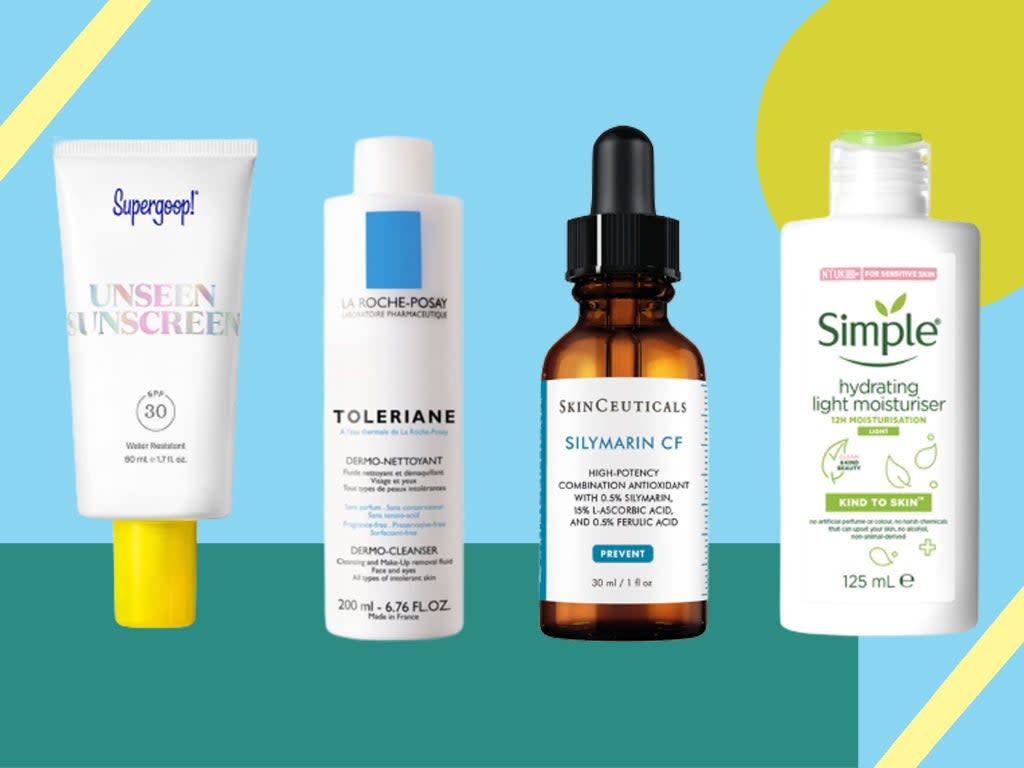
While there are many factors that influence the performance of your skincare products, one thing that always needs to be taken into consideration is the order in which you apply them.
It’s often not immediately clear either, as the skincare sphere is, at times, overloaded with information – some accurate, others misleading – so it can be tricky to understand what order to use your products and what role it plays in their efficacy.
Simply put, when applied in the correct order, your products can do their job properly. Firstly, the consistency of your products is key, as if applied in the wrong order, you can be left with an ineffective routine and sometimes, a sticky, gloopy face full of products.
Also imperative is having an understanding of products with active ingredients in them, which target specific concerns such as acne or hyperpigmentation. Get this application wrong and you could end up facing irritation and increased sensitivity.
To help clear up confusion and answer any questions you may have, we’ve consulted two experts as part of our in-depth skincare layering guide ahead; Dr Ifeoma Ejikeme, aesthetic medicine doctor and medical director of Adonia Medical Clinic and Dija Ayodele, aesthetician, founder of West Room Aesthetics and author of Black Skin: The definitive skincare guide (£16, Amazon.co.uk).
Read more:
Step one: Cleansing
The first step of any skincare routine is cleansing, and what products you use can differ from morning to evening.
“The morning routine is about reviving the skin and protecting from pollution, free radicals and UV, hence the importance of using antioxidants and SPF,” explains Ayodele.
Your morning cleanse is simple as there’s no make-up to remove, and something gentle such as the La Roche-Posay toleriane dermo-cleanser (£12.50, Boots.com) is ideal for all skin types. When massaged into skin and rinsed off, your face will be left feeling smooth and soft. Plus, as it’s made with sensitive skin in mind, it won’t cause any irritation.

“Cleansers prepare the skin for what’s to come next by getting rid of make-up, sunscreen, germs and grime,” says Ayodele.
When it comes to the evening, it’s vital you effectively remove any make-up and SPF so you’re applying the rest of your products to clean skin. If it’s not removed properly, the rest of your routine won’t work as well and you might as well be washing money down the drain.
Double cleansing is a popular method among dermatologists, aestheticians and other skincare experts, and is the process of using a richer, oil-based cleanser to break down make-up, followed by a more lightweight option to leave skin completely clean. Your second cleanse can be your go-to in the morning also.
We’d recommend the Then I Met You living cleanser balm (£37, Cultbeauty.co.uk) that has a buttery soft texture that melts luxuriously onto dry skin and dissolves even the most stubborn of waterproof mascaras, matte red lipsticks and long-wearing foundation.

It’s vegan, packed with a cocktail of antioxidants, essential fatty acids and vitamin E, alongside grape seed, olie and seaberry oils with an aromatic scent that won’t overpower.
When removing a cleanser with a thicker, richer texture, a splash of water isn’t enough. Instead, opt for a reusable Face Halo makeup remover pad (£7, Boots.com). It’s a circular flannel made with microfibres that with a few swipes will remove make-up, SPF and dirt in seconds, and once you’re done, simply stick it in the washing machine and it will emerge brand new.
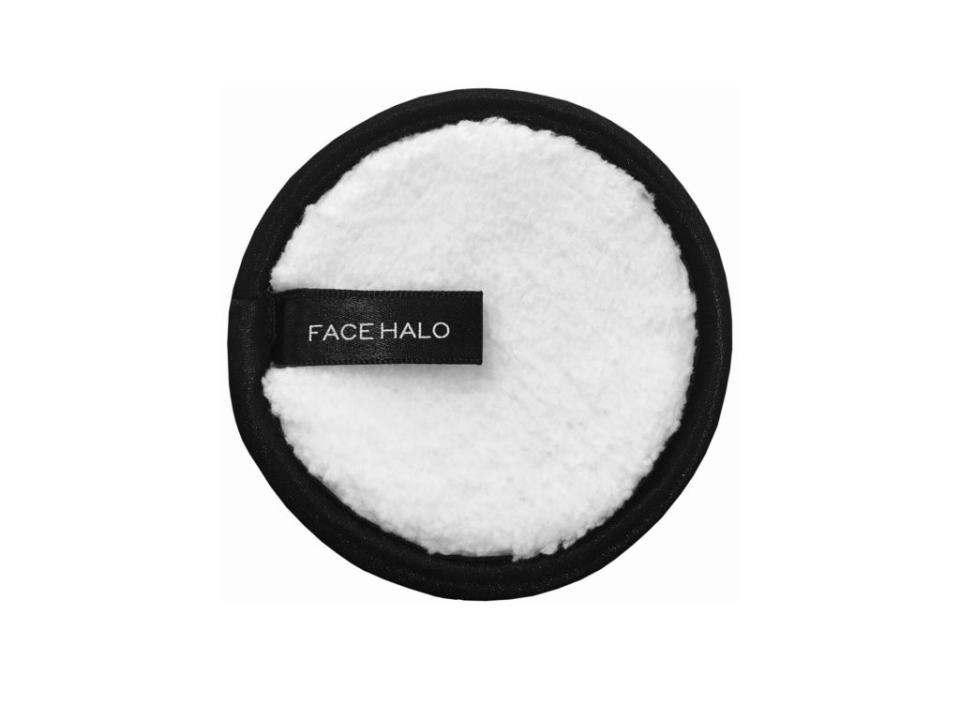
Step two: Exfoliating
There are two types of exfoliants, manual – meaning scrubs that need to be massaged around your face – and chemical, which are typically leave-on liquids.
“Exfoliating products help to shed old skin cells which create a barrier to the penetration of further products and also help to create a smooth surface with more clarity,” explains Ayodele.
She goes on to say, “The most effective place for chemical exfoliants such as glycolic acid or lactic acid, is to have them in either your cleanser or your serum. I prefer using them in your cleanser because it means you can take a ‘little and often’ approach to your exfoliating which is less likely to cause irritation in the long run.”
Our favourite is the Kate Somerville exfoliKate cleanser daily foaming wash (£34, Johnlewis.com) that’s silky soft without being drying, as some foaming cleansers can be.
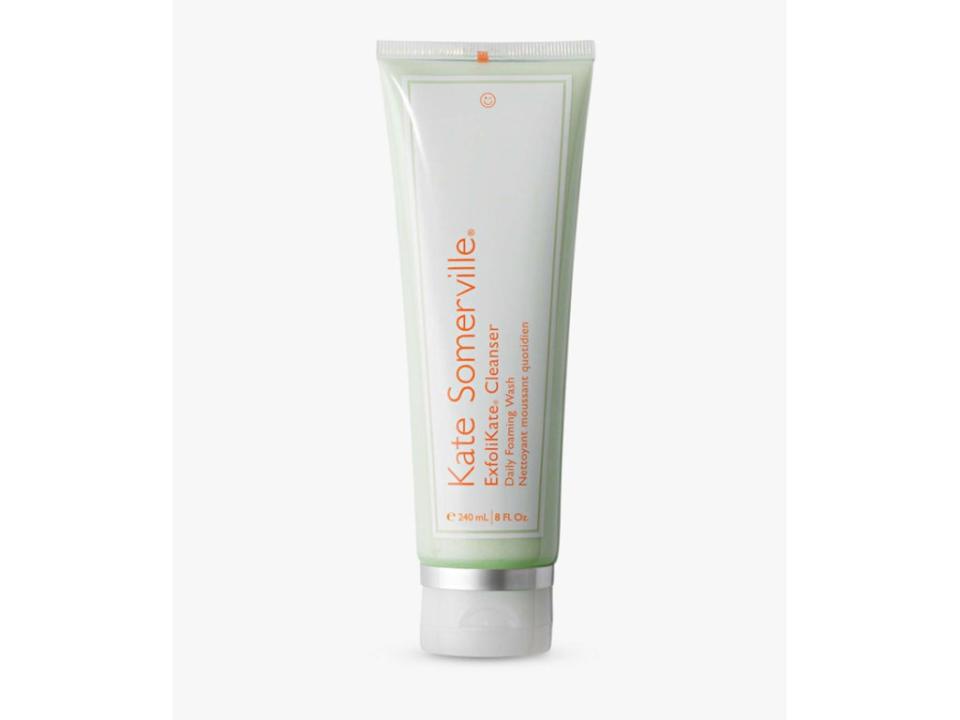
It contains two alpha-hydroxy acids, glycolic – which loosens dead skin cells sitting in your pores, smooths and brightens your complexion and lactic – which reduces blemishes, retains moisture and can improve the appearance of wrinkles.
“If you want to get more action from your exfoliating cleanser, you can apply it neat on to the skin and leave it on as a mask while you brush your teeth, for example a couple of times a week to help it work deeper into the skin,” says Ayodele.
Step three: Serums and retinol
Serums are always applied after cleansing and exfoliating, onto clean, dry skin. They’re not necessarily essential, but can be introduced into your routine if you are looking to combat a specific concern.
According to Ayodele, “Serums are the most effective way to include active ingredients into your skincare routine and they should specifically tackle your skincare concerns, for example pigmentation, sensitivity, or breakouts.”
She says, “The most effective serums are those which tackle multiple concerns at once as this means you can limit the number of products in your routine.”

If you’re shopping with a bigger budget and want to address oiliness throughout the day, reduce the appearance of blemishes and pores, our top pick is the SkinCeuticals silymarin CF antioxidant vitamin-c serum (£145, Feelunique.com) for use in your morning routine. It has a water-like consistency that absorbs into skin within seconds and within a fortnight, you’ll see a reduction in oil production and few spots with continuous use.
If it’s anti-aging ingredients you’re looking to embrace, look no further than retinol, a gold-standard ingredient made from retinoids, a group of compounds derived from vitamin A. It has a whole host of benefits, including increased cell turnover and collagen production, reduction in dark spots, and can tackle breakouts. Results can often be seen in 12 weeks with proper use in your evening skincare routine.
Not all retinols are made equal however, and they are available in varying strengths. Over the counter you can find them ranging from 0.1 per cent to two per cent.
“Start with the lowest strength retinol two to three times a week, avoiding sensitive areas such as the eyes, lips, neck and nose corners. Use at night and follow with a hydrating moisturiser, “ advises Dr Ejikeme, adding, “increase the retinol usage one day a week and aim to use 4-5 times a week. Ensure you use a broad-spectrum SPF during the day.”
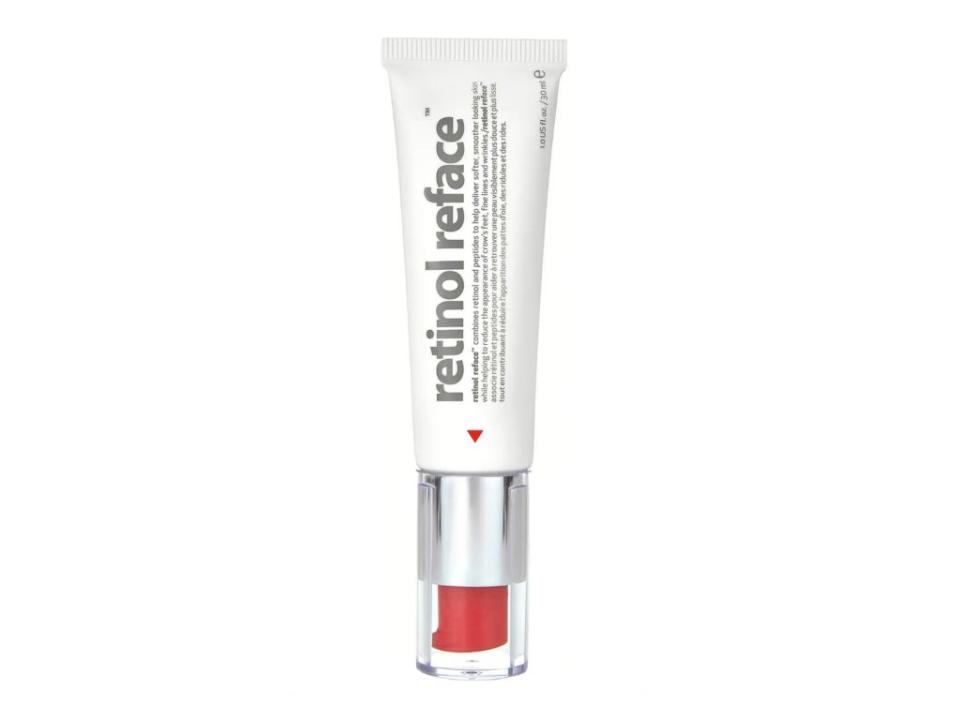
One we love for those new to retinol is Indeed Labs retinol reface retinol skin resurfacer (£16.66, Lookfantastic.com), which is also one of the most affordable on the market that leaves little to irritation.
It targets fine lines and wrinkles with a formula that contains retinol as well as bakuchiol – often hailed as a natural alternative to retinol as it’s made of plant-based ingredients, and suitable for sensitive skin. It has an instantly smoothing texture on the skin that leaves it feeling soft, not sticky.
Step four: Moisturiser and SPF
The penultimate step in a skincare routine is your moisturiser, which hydrates, replenishes and protects the skin barrier, and is definitely not a step to skip.
It’s also always a good idea to follow up using a retinol with a moisturiser as a common side effect of it is dryness, sometimes flaking of skin. A good moisturiser will leave skin feeling soft, supple and radiant too.
A fuss-free option and brilliant all-rounder is the Simple kind to skin hydrating light moisturiser (£2, Boots.com). The lightweight lotion is fast-absorbing, fragrance-free and super affordable.
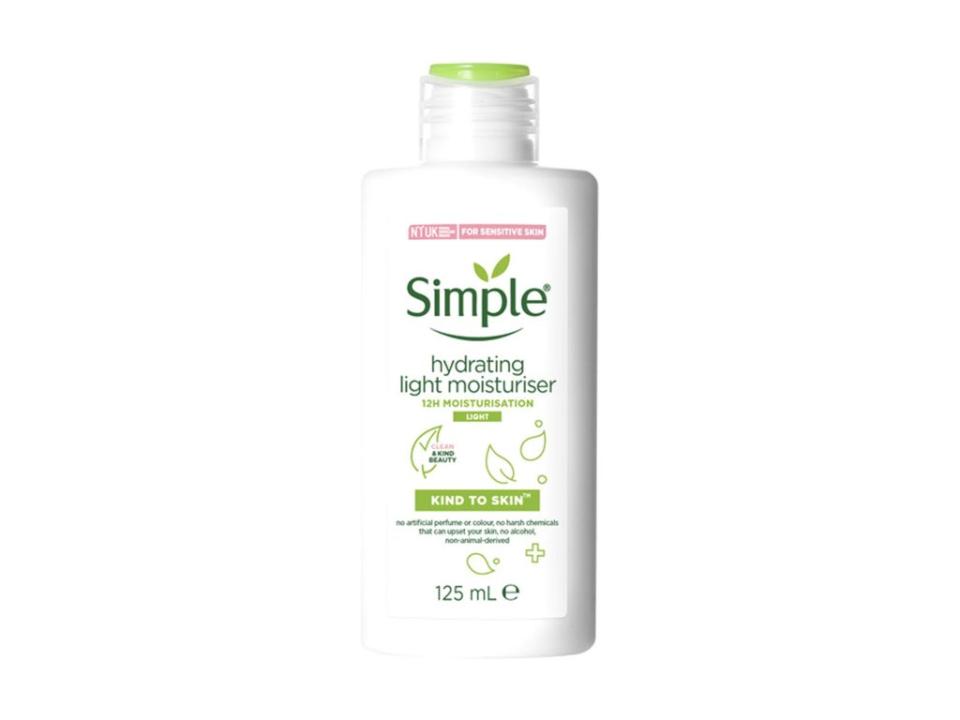
It’s ideal if your skin is particularly sensitive or in the midst of an acne flare-up when you want something simple that will get the job done.
The last step, and arguably the most important, is SPF. There is no better investment you can make for your skin than daily use of sunscreen that protects from UVA rays – which cause premature ageing such as wrinkles and dark spots. It’ll also protect from UVB rays, which cause sunburn and increase your risk of skin cancer, too.
Long gone are the days of thick, greasy white creams that leave skin feeling sticky and smelling faintly of biscuits. Instead a new generation of sun creams have taken centre stage with skin-smoothing textures that don’t leave a white cast, nor have your eyes watering.
Retinol makes the skin more sensitive to UV damage, so if you’re using it regularly in your routine, wearing SPF everyday is a must to look after your skin health and enjoy the anti-ageing benefits of your other products.
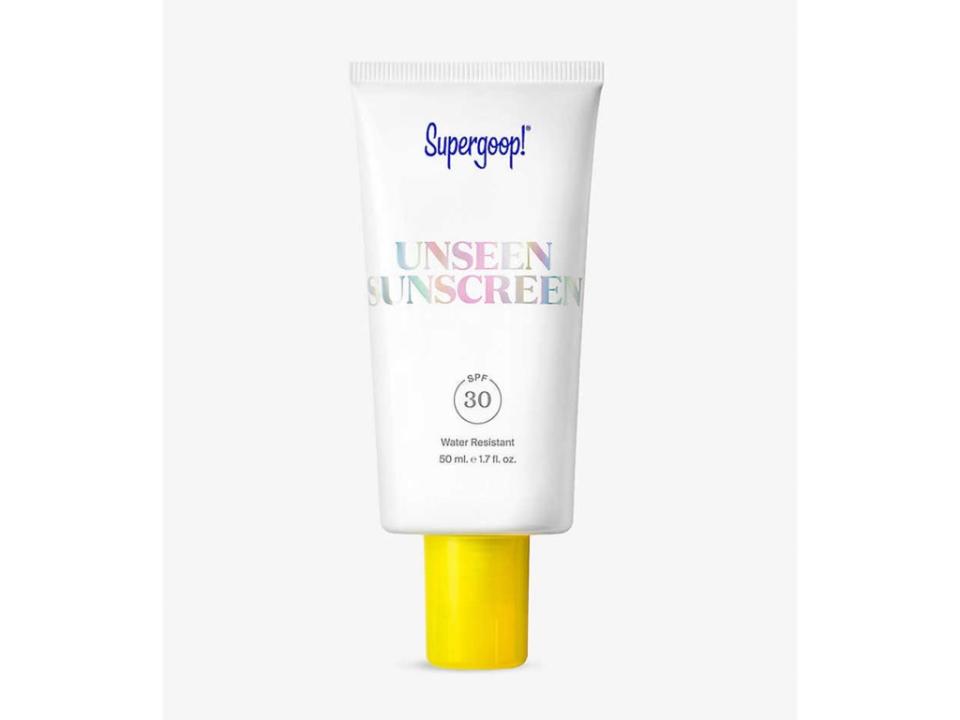
One that’s become a staple in our skincare routine is the Supergoop! unseen sunscreen SPF 30 suncream (£30, Selfridges.com). It has a velvety consistency that glides onto the skin and doubles up as a primer to ensure your make-up lasts longer.
It’s oil-free too, so if you struggle with a shiny T-zone, it won’t exasperate the area, while the antioxidant rich formula is sweat and water resistant, and we can attest that it holds up on a sweaty tube journey with ease.
Voucher codes
For the latest offers on skincare and other beauty buys, try the links below:
Don’t know your antioxidants from your acids? Read our skincare guide for an A-Z glossary of hero ingredients

